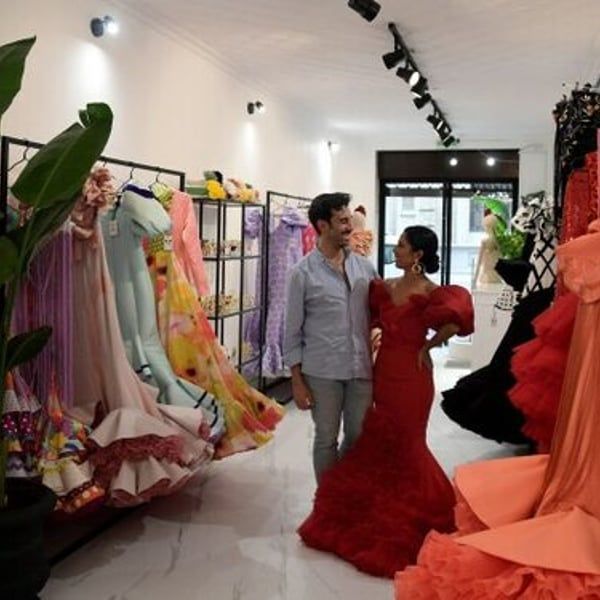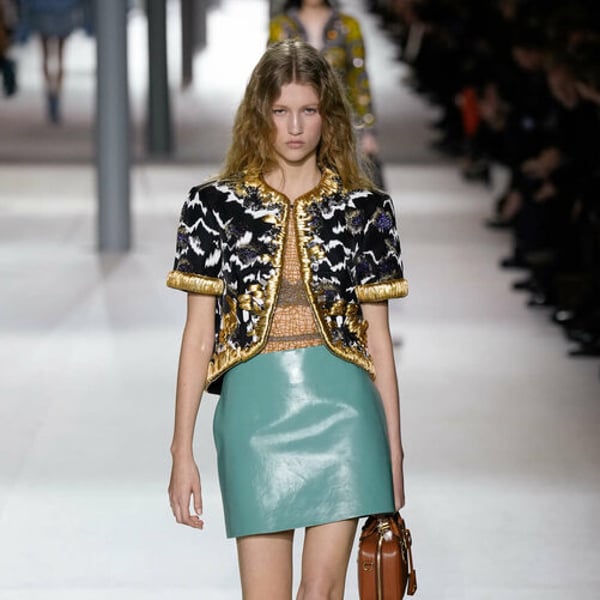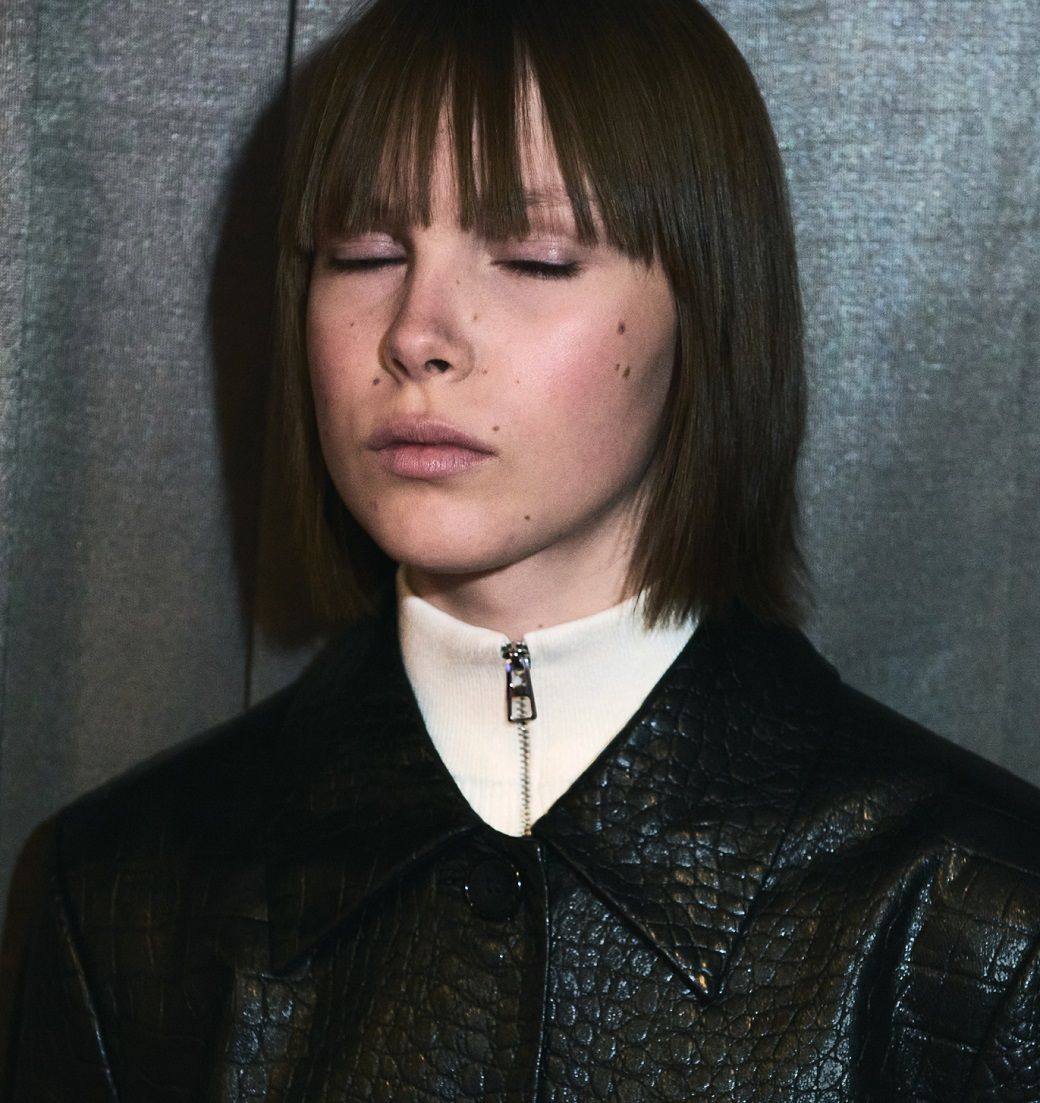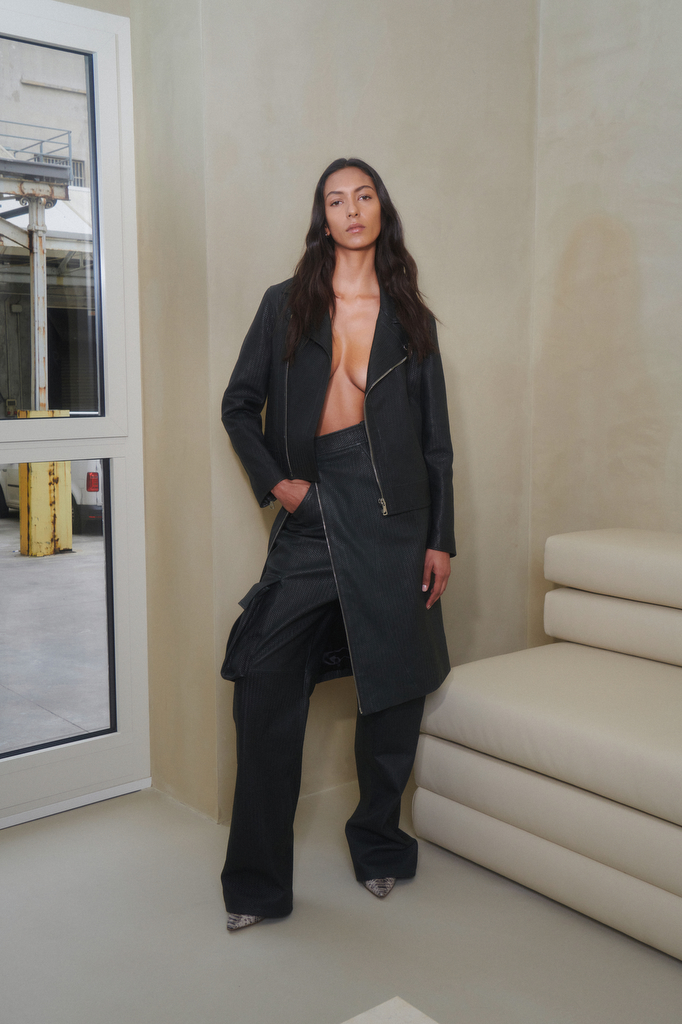By
AFP-Relaxnews
Published
April 21, 2024
Luis Fernández's workshop in Seville's old town is packed with clients who have come to try on his dazzling array of flamenco dresses, their vibrant fabrics replete with voluptuous ruffles and polka dots.
Flamenco fashion reaches its annual peak in spring, when the towns and cities of the Andalusia region of southern Spain hold their annual week-long fairs, when everyone puts on their best to go out. eat, drink and dance until the wee hours of the morning.
One client is Virginia Cuaresma. Under the designer's watchful eye, with pins ready to make any necessary adjustments, she stands in front of the mirror in a traditional midnight blue dress, with ruffles adorning the skirt and sleeves.
Then try one in aquamarine, combined with an embroidered fringe shawl of the same color. Then, a more modern style red dress, which leaves a lot of skin visible.
“Right now everything is chaos, we are up to our eyes… these are the last tests” before clients return to pick up their dresses “and enjoy the fair,” Fernández told AFP, referring to the situation of this southern city. prestigious fair that attracts hundreds of thousands of visitors and this year will be held from April 14 to 20.
The most traditional design, dating back more than 100 years, is a floor-length dress, fitted to the thigh, with a ruffled skirt and matching ruffles on the sleeves.
To complement the dress, the women complement themselves with a fringed shawl over their shoulders, earrings and bracelets, their hair gathered in a bun and held with a single flower comb, in an outfit that has become the image of Andalusia and even used abroad. as a symbol of Spain.
“The flamenco dress brings out the most beautiful thing in women,” explains Fernández, highlighting the wide neckline and the “hourglass silhouette” that highlights the contrast between the narrow waist and the hips and chest, in a style “very flattering” and makes the wearer look “beautiful.”
“When I choose a dress to go to the fair, I look for something that enhances my feminine figure,” says Cuaresma, a 34-year-old geographer with dark skin and long dark hair.
For her, dressing up for the fair is a way to “continue Andalusian traditions” and connect with her late grandmother Virginia, who sewed flamenco dresses when she was a child.
– An evolution of style –
Fernández, a native of Seville who grew up loving the fair, began working as a designer in 2012 along with fellow couturier Manuel Jurado, and knew from the beginning that he wanted to make flamenco dresses.
For him, it is a unique regional costume “that evolves with fashion and the only one that incorporates new trends,” he says proudly.
The garment has its roots in the so-called “majos” suits “worn by the working class” in Spain in the late 18th and early 19th centuries and often captured in the paintings of the Spanish master Goya, explained anthropologist Rosa María Martínez Moreno. , who wrote a book called “El Traje de Flamenca”.
With the beginning of the Seville fairs in the mid-19th century, the style began to be adopted by the wealthy classes at a time when there was a pushback against everything French, including its aristocratic fashions.
Added to this mix was the clothing of the gypsy women who sold donuts at the fair and who wore dresses and skirts decorated with ruffles.
By the 20th century, the flamenco dress had evolved into its current form and became popular, thanks in large part to the growth of flamenco as an art form and the expansion of schools teaching this Andalusian dance, which women often learn. to perform at fairs. Martínez Moreno said.
Image of Spain
During the 1960s, the dictatorship of General Francisco Franco set out to “sell Spain as a tourist attraction” and to do so he used “popular stereotypes” such as the flamenco dress that “began to be recognized as an image of Spanishness” abroad, he stated. . Add.
In recent years, Andalusian clothing has inspired renowned designers such as Christian Dior, who in 2022 presented a new collection in the iconic Plaza de España in Seville.
Fernández affirms that the Sevillian sector has become professional with designers who follow “the trends of Paris and Milan”, and that since 1995 they have organized an international flamenco fashion parade annually in the city.
An outfit from an atelier like the one run by Fernández can cost from several hundred euros to more than a thousand.
But today there are cheaper options in an era where fashion has become more accessible.
This is a relief for women like Cuaresma, who says that she usually buys “at least” one flamenco dress every year because for the fair, or at least the opening day, “we don't like to repeat” the same dress from previous years. .
Copyright © 2024 AFP-Relaxnews. All rights reserved.












